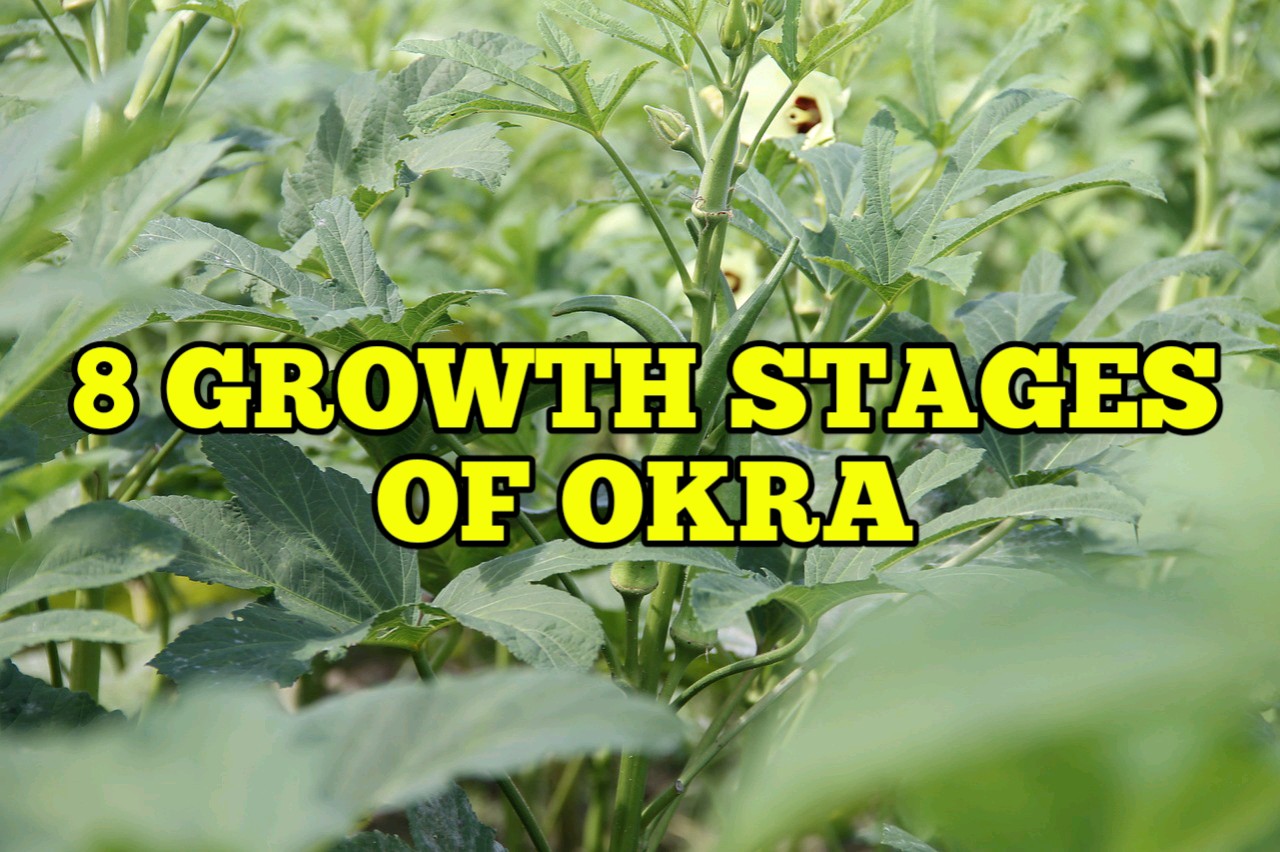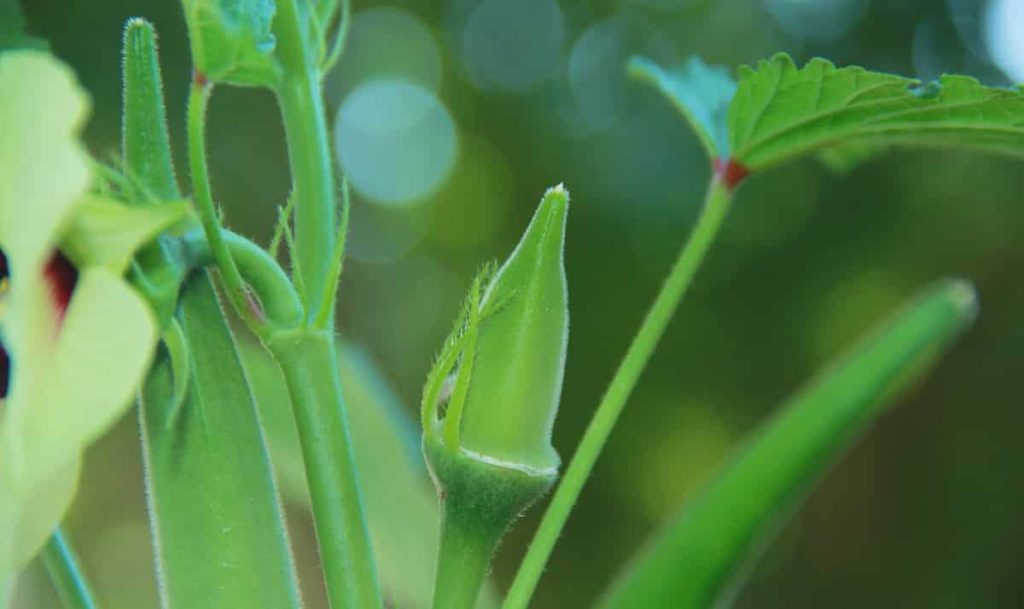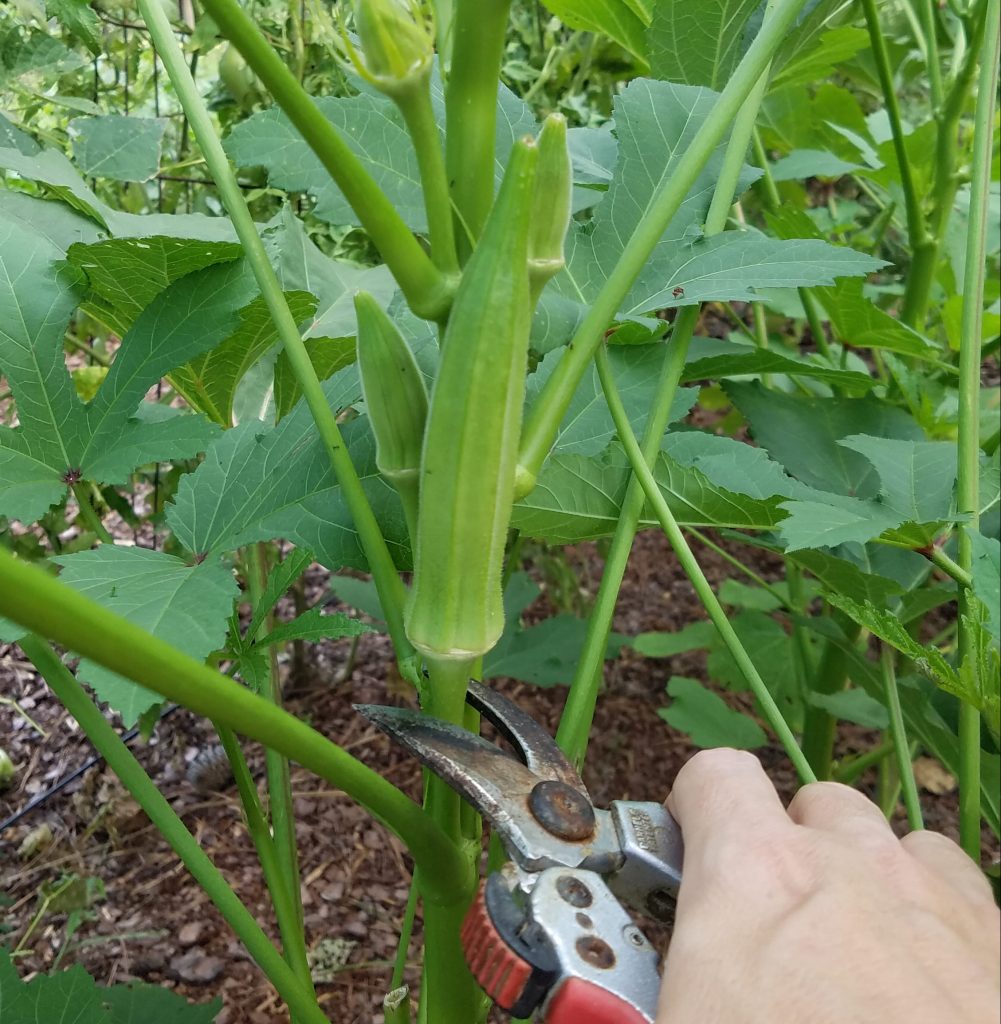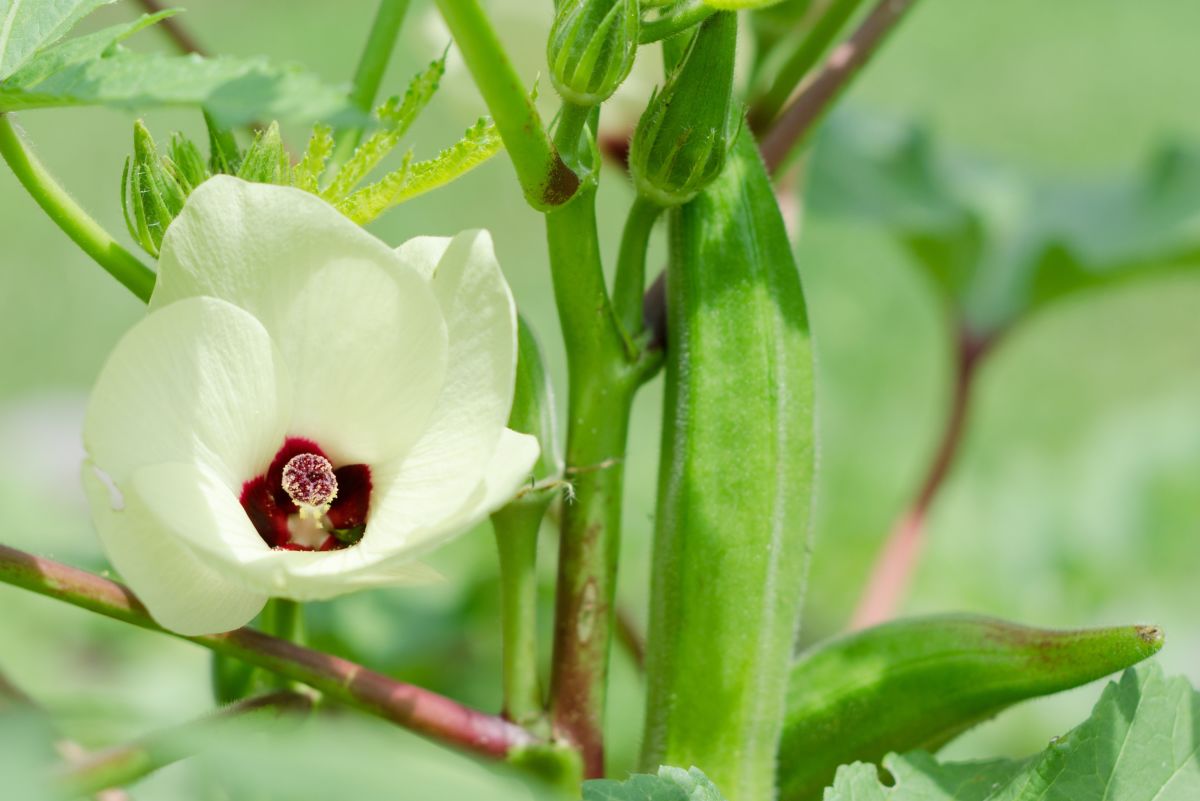Understanding Okra’s Life Cycle: From Seed to Harvest
Okra, also known as lady’s finger, is a popular vegetable crop that belongs to the mallow family. Its life cycle, from seed to harvest, is a complex process that involves several stages of growth. Understanding these stages is crucial for optimizing okra growth and maximizing yields. But how long does okra take to grow? The answer lies in its life cycle, which can be broadly divided into germination, seedling, vegetative, flowering, and harvesting stages.
The germination stage, which typically lasts around 3-5 days, marks the beginning of okra’s life cycle. During this stage, the seed absorbs water, and the embryo begins to grow. The seedling stage, which follows germination, is a critical period that requires careful attention. Okra seedlings are sensitive to temperature fluctuations, and optimal growth occurs when temperatures range between 65°F and 75°F (18°C and 24°C).
As the seedling grows, it enters the vegetative stage, characterized by rapid leaf growth and stem elongation. This stage, which can last anywhere from 2-4 weeks, is critical for developing a strong root system and preparing the plant for flowering. Okra plants require full sun, well-draining soil, and adequate watering during this stage. The ideal temperature for vegetative growth is between 70°F and 85°F (21°C and 30°C).
The flowering stage, which typically occurs 6-8 weeks after sowing, marks the beginning of okra’s reproductive cycle. Okra flowers are self-pollinating, but they can also be cross-pollinated by insects. The flowering stage is followed by the harvesting stage, which can occur anywhere from 50 to 70 days after sowing, depending on the variety and growing conditions.
Factors such as climate, soil quality, and watering frequency can significantly impact okra’s growth rate. For example, okra plants grown in warm, humid climates with well-draining soil tend to grow faster than those grown in cooler, drier climates. Understanding these factors and optimizing growing conditions can help okra growers maximize yields and reduce the time it takes for okra to grow.
By understanding okra’s life cycle and the factors that influence its growth, growers can take steps to optimize growing conditions and maximize yields. Whether you’re a seasoned okra grower or just starting out, knowing how long okra takes to grow can help you plan and manage your crop more effectively.
How to Create the Perfect Environment for Okra Growth
Creating an ideal environment for okra growth is crucial for maximizing yields and reducing the time it takes for okra to mature. Okra plants require specific temperature, humidity, and sunlight conditions to thrive. Understanding these requirements can help growers optimize their growing conditions and promote healthy growth.
Temperature is a critical factor in okra growth. Okra plants prefer warm temperatures between 65°F and 85°F (18°C and 30°C). Temperatures above 90°F (32°C) can lead to heat stress, while temperatures below 55°F (13°C) can slow down growth. Providing adequate shade, especially in warmer climates, can help regulate temperature and promote healthy growth.
Humidity is another essential factor in okra growth. Okra plants prefer a relatively high humidity, typically above 50%. However, excessive humidity can lead to fungal diseases and other issues. Ensuring good air circulation and providing adequate spacing between plants can help maintain optimal humidity levels.
Sunlight is also crucial for okra growth. Okra plants require full sun to produce well, so choosing a location that receives direct sunlight for at least 6 hours a day is essential. However, in warmer climates, providing some shade during the hottest part of the day can help prevent heat stress.
In addition to temperature, humidity, and sunlight, soil quality is also critical for okra growth. Okra plants prefer well-draining, rich soil with a pH between 6.0 and 7.0. Adding organic matter such as compost or manure can help improve soil fertility and structure. Choosing the right okra variety for your specific climate and soil conditions can also help optimize growth.
Providing adequate support for okra plants is also essential. Okra plants can grow quite tall, so providing a trellis or other support system can help keep them upright and promote better growth. Mulching around the plants can also help retain moisture, suppress weeds, and regulate soil temperature.
By understanding the ideal conditions for okra growth and taking steps to create an optimal environment, growers can promote healthy growth, maximize yields, and reduce the time it takes for okra to mature. Whether you’re growing okra in a container or in the ground, providing the right conditions can make all the difference in the success of your crop.
The Role of Climate and Weather in Okra Growth
Climate and weather play a significant role in okra growth, and understanding their impact can help growers optimize their cultivation strategies. Okra is a warm-season crop that thrives in temperatures between 65°F and 85°F (18°C and 30°C). However, extreme temperatures, drought, and excessive rainfall can all impact okra growth and development.
Temperature fluctuations can significantly impact okra growth. Okra plants are sensitive to frost, and temperatures below 55°F (13°C) can damage or kill the plants. On the other hand, temperatures above 90°F (32°C) can lead to heat stress, reducing okra yields and quality. Growers can use techniques such as row covers or black plastic mulch to regulate soil temperature and reduce heat stress.
Drought is another significant challenge for okra growers. Okra plants require consistent moisture, especially during the fruiting stage. Drought can lead to reduced yields, lower quality fruit, and increased susceptibility to pests and diseases. Growers can use irrigation systems and mulch to conserve water and reduce drought stress.
Excessive rainfall can also impact okra growth. Okra plants are susceptible to root rot and other diseases in waterlogged soil. Growers can use raised beds or drainage systems to improve soil drainage and reduce the risk of disease.
Climate zones also play a significant role in okra growth. Okra is typically grown in USDA Hardiness Zones 3-11, although it can be grown in other zones with protection from frost. Growers in cooler climates can use techniques such as starting okra seeds indoors or using cold frames to extend the growing season.
Weather conditions such as wind, hail, and extreme weather events can also impact okra growth. Growers can use techniques such as windbreaks, row covers, and crop insurance to mitigate these risks.
By understanding the impact of climate and weather on okra growth, growers can take steps to optimize their cultivation strategies and reduce the risks associated with extreme weather events. This can help growers maximize their okra yields and improve the overall quality of their crop.
When it comes to okra growth, understanding the role of climate and weather is crucial for success. By adapting to different climate zones and weather conditions, growers can optimize their cultivation strategies and reduce the time it takes for okra to mature. Whether you’re growing okra in a warm or cool climate, understanding the impact of climate and weather can help you grow a healthy and productive crop.
Okra Growth Stages: What to Expect and When
Okra growth can be divided into several stages, each with its own unique characteristics and challenges. Understanding these stages can help growers anticipate and address potential issues, ultimately leading to a healthier and more productive crop.
The first stage of okra growth is germination, which typically occurs within 3-5 days of sowing. During this stage, the seed absorbs water, and the embryo begins to grow. The seedling stage follows germination, lasting around 1-2 weeks. During this stage, the seedling develops its first set of leaves and begins to produce roots.
The vegetative stage, which lasts around 2-4 weeks, is characterized by rapid leaf growth and stem elongation. Okra plants can grow quite tall during this stage, so providing support with a trellis or stake can help keep them upright and promote better growth.
The flowering stage, which typically occurs around 6-8 weeks after sowing, marks the beginning of okra’s reproductive cycle. Okra flowers are self-pollinating, but they can also be cross-pollinated by insects. The flowering stage is followed by the fruiting stage, during which the okra pods begin to form and mature.
The maturation stage, which typically occurs around 10-12 weeks after sowing, marks the final stage of okra growth. During this stage, the okra pods reach their full size and color, and are ready for harvest.
Overall, the entire okra growth cycle can take anywhere from 60 to 120 days, depending on factors such as climate, soil quality, and watering conditions. By understanding the different stages of okra growth, growers can better anticipate and address potential challenges, ultimately leading to a healthier and more productive crop.
So, how long does okra take to grow? The answer depends on a variety of factors, including climate, soil quality, and watering conditions. However, by providing optimal growing conditions and understanding the different stages of okra growth, growers can promote healthy and rapid growth, ultimately leading to a bountiful harvest.
Factors That Influence Okra’s Growth Rate
Okra growth rate can be influenced by a variety of factors, including soil quality, watering frequency, and pest management. Understanding these factors can help growers optimize their cultivation strategies and promote healthy and rapid growth.
Soil quality is a critical factor in okra growth. Okra plants prefer well-draining, rich soil with a pH between 6.0 and 7.0. Soil with poor drainage or inadequate nutrients can lead to stunted growth and reduced yields. Growers can improve soil quality by adding organic matter such as compost or manure, and by using mulch to retain moisture and suppress weeds.
Watering frequency is another important factor in okra growth. Okra plants require consistent moisture, especially during the fruiting stage. However, overwatering can lead to root rot and other problems. Growers can use techniques such as drip irrigation or soaker hoses to deliver water directly to the roots, reducing evaporation and runoff.
Pest management is also crucial for okra growth. Okra plants are susceptible to a variety of pests, including aphids, whiteflies, and spider mites. Growers can use integrated pest management (IPM) strategies, such as introducing beneficial insects or using organic pesticides, to minimize the impact of pests on okra growth.
Other factors that can influence okra growth rate include temperature, humidity, and sunlight. Okra plants prefer warm temperatures between 65°F and 85°F (18°C and 30°C), and high humidity. However, extreme temperatures or drought can lead to stress and reduced growth. Growers can use techniques such as row covers or black plastic mulch to regulate soil temperature and retain moisture.
By understanding the factors that influence okra growth rate, growers can take steps to optimize their cultivation strategies and promote healthy and rapid growth. This can help growers maximize their okra yields and improve the overall quality of their crop.
So, how long does okra take to grow? The answer depends on a variety of factors, including soil quality, watering frequency, and pest management. However, by providing optimal growing conditions and understanding the factors that influence okra growth rate, growers can promote healthy and rapid growth, ultimately leading to a bountiful harvest.
Common Challenges and Solutions for Growing Okra
Okra is a relatively easy crop to grow, but it can be susceptible to certain challenges. Understanding these challenges and knowing how to address them can help growers overcome obstacles and achieve a successful harvest.
Pests are one of the most common challenges faced by okra growers. Aphids, whiteflies, and spider mites are all common pests that can infest okra plants. To control these pests, growers can use integrated pest management (IPM) strategies, such as introducing beneficial insects or using organic pesticides.
Diseases are another challenge that okra growers may face. Okra is susceptible to a variety of diseases, including powdery mildew, leaf spot, and root rot. To prevent these diseases, growers can use techniques such as crop rotation, sanitation, and fungicides.
Nutrient deficiencies are also a common challenge for okra growers. Okra requires a balanced diet of nutrients to grow and thrive. Growers can use soil tests to determine the nutrient levels in their soil and adjust their fertilization accordingly.
Other common challenges faced by okra growers include temperature fluctuations, drought, and excessive rainfall. To address these challenges, growers can use techniques such as row covers, irrigation systems, and mulch to regulate soil temperature and retain moisture.
By understanding the common challenges faced by okra growers and knowing how to address them, growers can overcome obstacles and achieve a successful harvest. Whether you’re a seasoned okra grower or just starting out, being aware of these challenges and knowing how to address them can help you grow a healthy and productive crop.
So, how long does okra take to grow? The answer depends on a variety of factors, including the specific variety of okra, the growing conditions, and the level of care provided. However, by providing optimal growing conditions and addressing potential challenges, growers can promote healthy and rapid growth, ultimately leading to a bountiful harvest.
Maximizing Okra Yield: Tips and Techniques
Maximizing okra yield requires a combination of proper care, maintenance, and harvesting techniques. By following these tips and techniques, growers can optimize their okra production and enjoy a bountiful harvest.
Pruning is an essential technique for maximizing okra yield. Pruning involves removing lower leaves and weak growth to promote healthy and vigorous growth. This technique also helps to increase air circulation and reduce the risk of disease.
Training is another important technique for maximizing okra yield. Training involves providing support for the okra plants as they grow. This can be done using trellises, stakes, or cages. Training helps to promote upright growth and increase yields.
Harvesting is a critical stage in okra production. Okra is typically ready to harvest within 50 to 60 days of sowing. Harvesting should be done regularly to encourage the plants to produce more fruit. Okra can be harvested at different stages of maturity, depending on the desired texture and flavor.
Proper okra care and maintenance are also essential for maximizing yields. This includes providing adequate water, nutrients, and pest management. Growers should also keep an eye out for common challenges such as pests, diseases, and nutrient deficiencies.
By following these tips and techniques, growers can maximize their okra yield and enjoy a successful harvest. Whether you’re a seasoned okra grower or just starting out, these tips and techniques can help you optimize your okra production and achieve a bountiful harvest.
So, how long does okra take to grow? The answer depends on a variety of factors, including the specific variety of okra, the growing conditions, and the level of care provided. However, by providing optimal growing conditions and following these tips and techniques, growers can promote healthy and rapid growth, ultimately leading to a bountiful harvest.
Conclusion: Growing Okra with Confidence
Growing okra can be a rewarding and delicious experience, but it requires a good understanding of the plant’s growth cycle, ideal growing conditions, and potential challenges. By following the tips and techniques outlined in this article, growers can create a suitable environment for okra growth, address potential challenges, and maximize their yields.
Understanding okra’s growth cycle is crucial for optimizing growth and maximizing yields. By knowing what to expect at each stage of growth, growers can provide the necessary care and maintenance to promote healthy and rapid growth.
Creating a suitable environment for okra growth is also essential for success. This includes providing optimal temperature, humidity, and sunlight conditions, as well as preparing the soil and providing adequate support for the plants.
Addressing potential challenges, such as pests, diseases, and nutrient deficiencies, is also critical for growing okra with confidence. By being aware of these challenges and knowing how to overcome them, growers can minimize losses and maximize their yields.
So, how long does okra take to grow? The answer depends on a variety of factors, including the specific variety of okra, the growing conditions, and the level of care provided. However, by providing optimal growing conditions and following the tips and techniques outlined in this article, growers can promote healthy and rapid growth, ultimately leading to a bountiful harvest.
With the right knowledge and techniques, growing okra can be a fun and rewarding experience. Whether you’re a seasoned okra grower or just starting out, this article has provided you with the information and confidence you need to grow okra with success.






